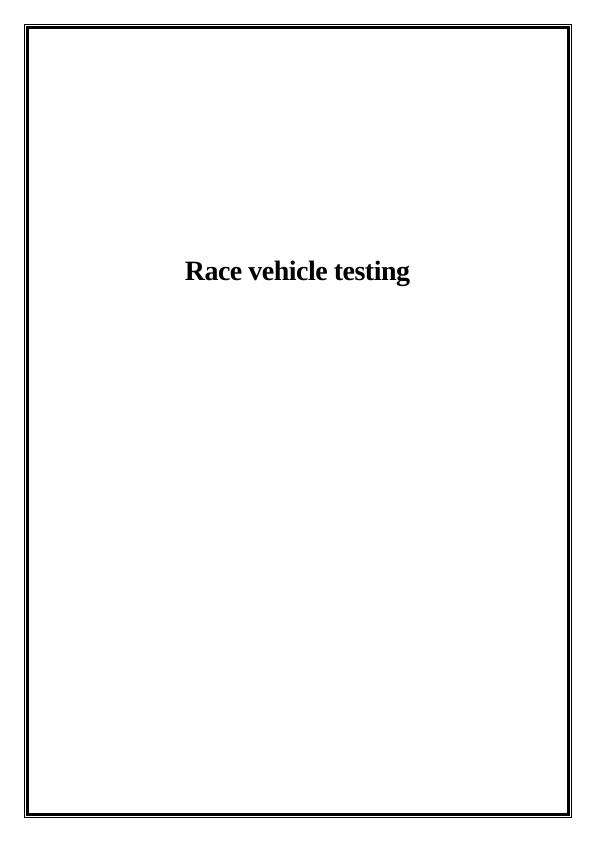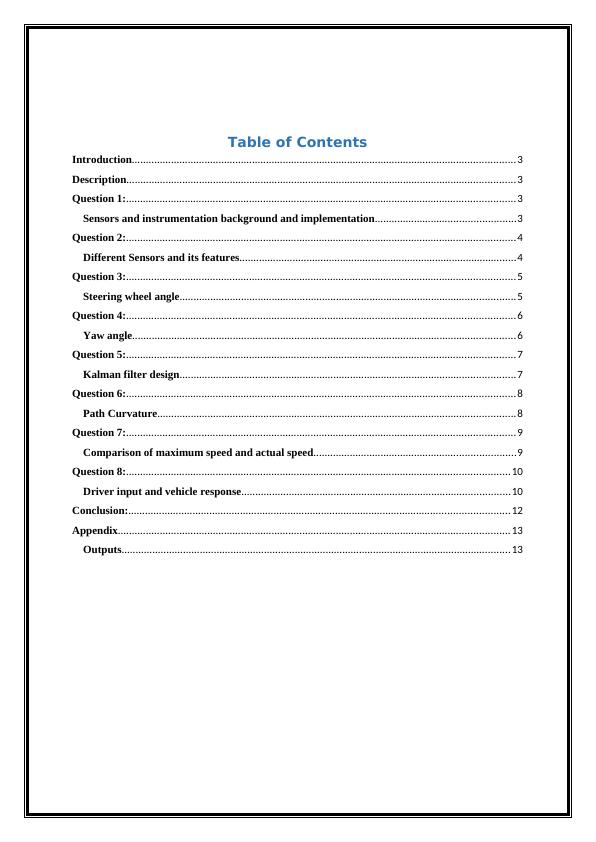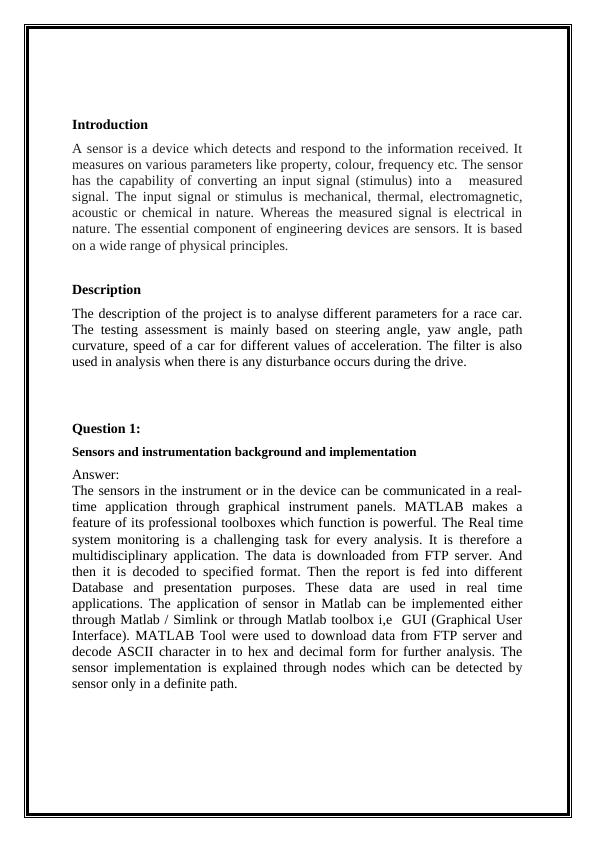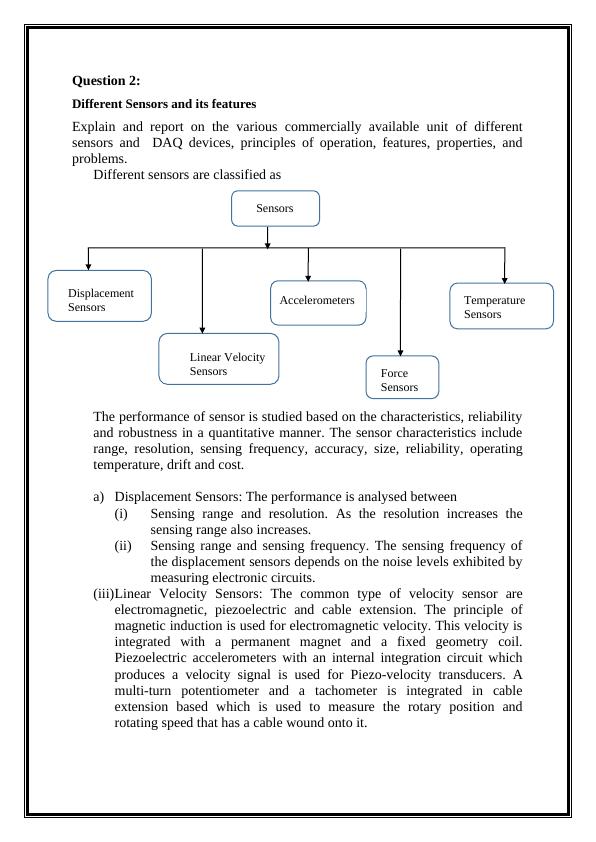Race Vehicle Testing
The assignment involves testing a 2006 Ford Fiesta ST on different terrains and collecting data using various sensors and instrumentation. The report should include an explanation of the testing equipment, data processing, and data interpretation.
18 Pages4122 Words260 Views
Added on 2023-04-21
About This Document
This document discusses race vehicle testing and analysis, including sensors and instrumentation, different sensors and their features, steering wheel angle calibration, yaw angle calculation, Kalman filter design, path curvature calculation, and comparison of maximum speed and actual speed. The document provides explanations, MATLAB code, and plots for each topic.
Race Vehicle Testing
The assignment involves testing a 2006 Ford Fiesta ST on different terrains and collecting data using various sensors and instrumentation. The report should include an explanation of the testing equipment, data processing, and data interpretation.
Added on 2023-04-21
ShareRelated Documents
End of preview
Want to access all the pages? Upload your documents or become a member.




